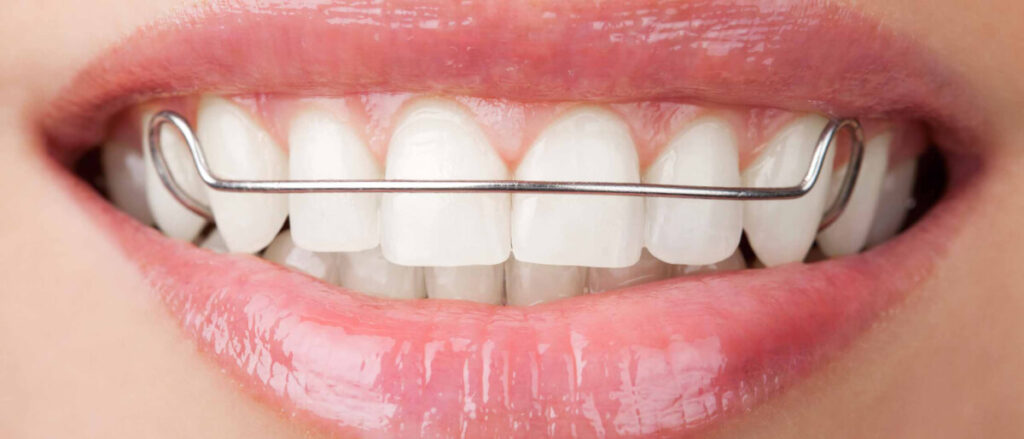Think braces are the only way to fix crooked teeth? Think again. Whether you’re avoiding wires for comfort, convenience, or appearance, several modern solutions offer a straighter smile—no metal required. But which ones actually work, and who are they right for? The answer might surprise you. Let’s explore the top alternatives and what they really offer.
TL;DR:
Crooked teeth can be corrected without traditional braces through options like clear aligners (discreet, removable, best for mild–moderate cases), veneers (instant cosmetic improvement, no alignment change), dental bonding (quick fix for minor flaws), and lingual braces (hidden behind teeth, effective for various issues). The right choice depends on misalignment severity, appearance goals, budget, lifestyle, and treatment commitment, making a dental consultation essential.
Straighten your teeth with expert care—Contact an orthodontist in Forest Hills today! 🦷

Can You Straighten Teeth Without Braces?
Yes, it is possible to straighten teeth without traditional metal braces. Advances in dental and orthodontic technology have made several effective and discrete alternatives available, offering solutions for misalignment, crowding, and gaps—often with greater comfort and less visibility than braces.
While metal braces remain the go-to option for more severe alignment issues, many individuals with mild to moderate concerns can benefit from less invasive methods. These alternatives are especially popular among adults and teens who want a more subtle way to improve their smile without the appearance of brackets and wires.
That said, the effectiveness of non-braces treatments depends on a few factors, including the complexity of the dental issue, the patient’s dedication to following the treatment plan, and professional guidance. A dental consultation is essential to determine the most suitable option for your specific needs.
Alternatives to Braces for Crooked Teeth
If you’re looking to straighten your teeth without traditional metal braces, there are several effective alternatives to consider. Each option comes with its own benefits and limitations, depending on your dental needs and cosmetic goals.
1. Clear Aligners
Clear aligners, such as Invisalign and similar systems, use a series of transparent trays to gradually shift your teeth into place. They’re removable, making it easier to eat and maintain oral hygiene, and are often chosen for their discreet appearance.
Pros:
- Nearly invisible
- Removable for eating and brushing
- Generally more comfortable than metal braces
Cons:
- Requires wearing 20–22 hours a day
- Less suitable for severe misalignments
2. Dental Veneers
Veneers are thin porcelain or composite shells bonded to the front of your teeth. While they don’t actually move teeth, they can dramatically improve the look of a crooked smile by creating a straighter appearance.
Pros:
- Instant cosmetic enhancement
- Long-lasting with proper care
Cons:
- Irreversible due to enamel removal
- Cosmetic only—no alignment correction
3. Dental Bonding
Bonding uses a tooth-colored resin to reshape or visually align teeth. It’s a quick and cost-effective way to improve minor imperfections, though not a solution for structural misalignment.
Pros:
- Quick and affordable
- Minimally invasive
Cons:
- Less durable than veneers
- Best for minor cosmetic fixes
4. Lingual Braces
Lingual braces are similar to traditional braces but are attached to the back side of the teeth, keeping them hidden from view.
Pros:
- Invisible from the front
- Can treat various alignment issues
Cons:
- May cause more initial discomfort
- Harder to clean and maintain
Each of these options offers a unique way to improve the appearance of crooked teeth without the look of traditional braces. A consultation with a dental professional can help determine which solution best fits your needs.
Which Option Is Right for You?
Deciding how to straighten your teeth involves considering several important factors. The severity of your misalignment is a primary concern—clear aligners are effective for mild to moderate cases, but more complex alignment issues may require traditional or lingual braces for best results.
Your aesthetic preferences also play a big role. If keeping your treatment discreet is important, clear aligners or lingual braces offer nearly invisible solutions. For those seeking a fast cosmetic fix without moving the teeth, veneers or bonding might be more appealing.
Budget and insurance coverage should also be factored in. Veneers and bonding are often considered cosmetic and may not be covered by insurance, whereas orthodontic treatments like braces and aligners might be partially covered. Additionally, your lifestyle and commitment level matter—clear aligners must be worn consistently, while veneers and bonding require regular maintenance and good oral hygiene.
Ultimately, the best way to choose the right option is by consulting with a licensed dentist or orthodontist. They’ll assess your dental condition, discuss your goals, and guide you toward the treatment that fits both your needs and expectations.
Sources.
Shah, K., Chawda, S., Patel, V., Shah, A., Patel, H., & Shah, M. (2023). Aligners vs. Braces: Choosing the Right Treatment. Journal of Advanced Zoology [Internet], 44(2), 3342-57.
Semenova, E. A., Danilova, D. V., Lizunova, K. A., & Kharitonova, O. E. (2022). ALIGNERS AS AN ALTERNATIVE TO BRACES. In Сборник научных трудов молодых ученых и специалистов (pp. 454-458).
Key Takeaways:
Braces aren’t the only option—modern alternatives can address mild to moderate misalignment, crowding, and gaps with greater comfort and less visibility.
Effectiveness depends on case severity, patient compliance, and professional guidance, making a dental consultation essential.
Main alternatives to traditional braces:
- Clear Aligners – Nearly invisible, removable, comfortable; require 20–22 hrs/day wear; less effective for severe misalignment.
- Dental Veneers – Instant cosmetic improvement; durable; irreversible and cosmetic only (no actual tooth movement).
- Dental Bonding – Quick, affordable, minimally invasive; best for minor fixes; less durable than veneers.
- Lingual Braces – Placed behind teeth, invisible from front; can treat various issues; harder to clean, may cause initial discomfort.
Choice factors: misalignment severity, desired aesthetics, budget/insurance coverage, lifestyle, and willingness to follow treatment requirements.
Consultation with a dentist/orthodontist is the best way to select the most suitable and effective option.